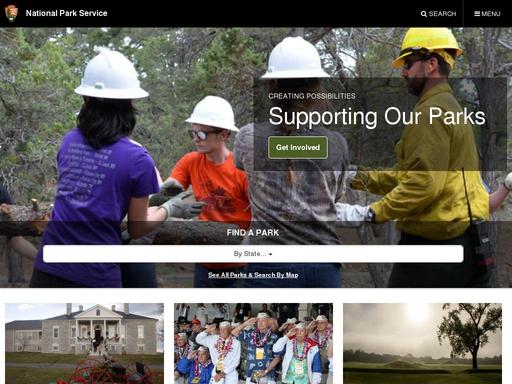Rate Minidoka National Historic Site
Learn and Explore
Since 1916, the National Park Service has been entrusted with the care of our national parks. With the help of volunteers and partners, we safeguard these special places and share their stories with more than 275 million visitors every year. But our work doesn’t stop there.
We are proud that tribes, local governments, nonprofit organizations, businesses, and individual citizens ask for our help in revitalizing their communities, preserving local history, celebrating local heritage, and creating close to home opportunities for kids and families to get outside, be active, and have fun.
Taking care of the national parks and helping Americans take care of their communities is a job we love, and we need—and welcome—your help and support.
Our Mission
The National Park Service preserves unimpaired the natural and cultural resources and values of the National Park System for the enjoyment, education, and inspiration of this and future generations. The Park Service cooperates with partners to extend the benefits of natural and cultural resource conservation and outdoor recreation throughout this country and the world.
Frequently Asked Questions
How do I obtain a park entrance pass?
Only 118 of your 417 park sites charge entrance fees. You can obtain park entrance passes by visiting a park site that charges an entrance fee. Entrance fee sites have passes available; we recommend calling a park prior to your visit. (See the park search to locate a specific park.) There are a number of entrance passes available, including park-specific passes as well as passes that offer entrance to more than 2,000 federal recreation sites in addition to the national parks (Annual, Military, Senior, 4th Grade, Access, and Volunteer passes). Learn more about the America the Beautiful – The National Parks and Federal Recreational Lands Pass.
About this location:
National Historic Site
Operating Hours & Seasons
Minidoka National Historic Site
The Historic Site is open daily during daylight hours year-round. The Historic Site is still being developed. Please be prepared. Wear sturdy footwear and bring water. There is little – no shade at the site. Portable toilet facilities are available. The Historic Site is located on a county road. It may not be well maintained during winter weather. Please check road conditions before venturing there.
Standard Hours
- Sunday: Sunrise – Sunset
- Monday: Sunrise – Sunset
- Tuesday: Sunrise – Sunset
- Wednesday: Sunrise – Sunset
- Thursday: Sunrise – Sunset
- Friday: Sunrise – Sunset
- Saturday: Sunrise – Sunset
Fees & Passes
Entrance Fees:
- $0.00 – Minidoka Entrance Fee
There is no charge for entering or visiting Minidoka National Historic Site.
About
Lessons in History
The Pearl Harbor attack intensified existing hostility towards Japanese Americans. As wartime hysteria mounted, President Roosevelt signed Executive Order 9066 forcing over 120,000 West Coast persons of Japanese ancestry (Nikkei) to leave their homes, jobs, and lives behind and move to one of ten Relocation Centers. This single largest forced relocation in U.S. history is Minidoka’s story.
Directions
Minidoka National Historic Site is located between the towns of Twin Falls and Jerome, Idaho in south central Idaho. There are minimal facilities and services at the site. Many buildings and features that were part of the center are located on private property surrounding the Historic Site. Please do not enter any private property.
Visitor Centers
Minidoka Temporary Visitor Center
Beginning September 2, 2017, the temporary Visitor Center will be open on Saturdays and Sundays from 10 am to 5 pm, as weather permits. You can get information, brochures, maps and the NPS passport stamp for Minidoka. The grounds of the site will still be open seven days a week from sunrise to sunset for self-guided tours on the 1.6 mile walking trail with outdoor exhibits telling the history of the site. To schedule a guided tour of 10 or more people, please call Hanako Wakatsuki at 208-933-4125.
Weather
Jerome and Twin Falls, Idaho, gets 10 inches of rain per year. On average, there are 213 sunny days per year here. The July high is around 94 degrees. The January low is 22. Our comfort index, which is based on humidity during the hot months, is a 78 out of 100, where higher is more comfortable. The US average on the comfort index is 44.








